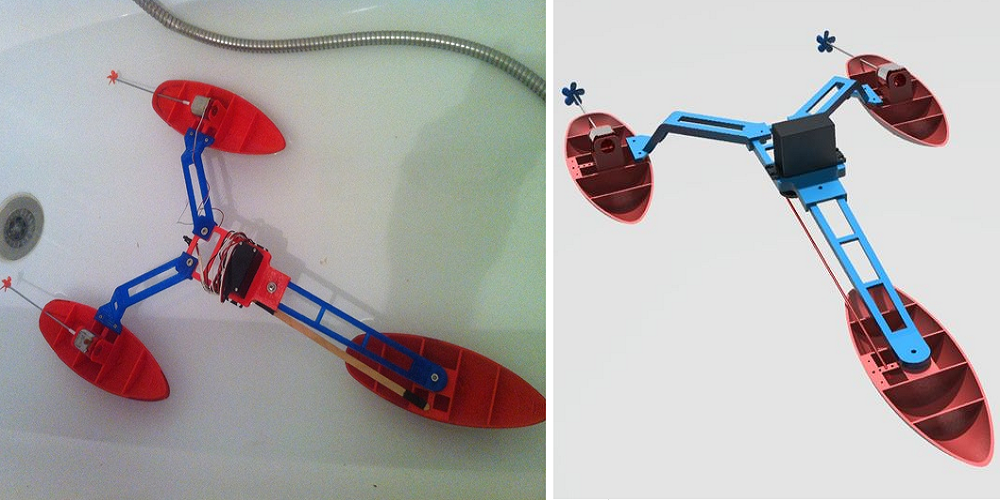
“The idea of making a low friction boat was in my head for a long time,” Rahav explained. “Then, when I saw the ‘MakeItFlow’ challenge at Thingiverse, I decided to try and make it for real. I thought that the surface contact with the water should be minimal, but I wanted to improve the stability and maneuverability. All these points can be achieved by separating the boat into three mini boats.”
And so that’s exactly what he did.
“I designed this boat in order to test the ability to reduce water friction while improving stability. I started with designing the boat, using the same boat for all three places – except that one of them is a mirror image. At first, I made the wall thicknesses of the boat too thin (1mm) so I couldn’t print it well. Then I tried to make it thicker without making it too heavy. I ended with 1.5mm thickness which gave the boat a weight of 19.2gr and a floating ability of 82gr. Then I designed the bridges and tried to reduce the weight as much as possible,” said Rahav.
For the propellors, Rahav incorporated two toy motors and a servo motor for steering. In the tradition of DIY, he repurposed a clothes hanger to make rods for the propellers and then connected the rods to the motor shaft using a small plastic tube. Turning loose the budget, he spared no expense on the steering beam (the piece that connects the servo and the front of the boat) and crafted it from a paper clip and a wooden stick.
Let us know if this is the sort of design that floats your boat in the 3D Printed Tri-Boat forum thread over at 3DPB.com. Check out a bathtub test of the project in the video below.
https://youtu.be/J_eyrU2FmGk
